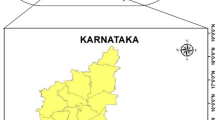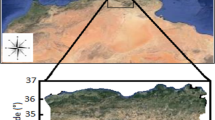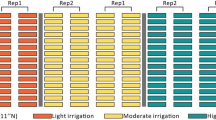Abstract
Soil moisture monitoring is a significant aspect of environmental and agricultural studies, and Global Navigation Satellite System Interferometric Reflectometry (GNSS-IR) has emerged as a promising technology for this purpose. Traditionally, GNSS-IR is mainly employed for bare soil experiments, and the effectiveness of bare soil retrieval algorithm will be reduced due to the influence of vegetation and meteorological, etc. To address the limitations of the bare-soil retrieval algorithm, a multi-feature soil moisture retrieval approach was proposed. This approach integrated multiple factors including GNSS signals, cumulative precipitation, effective reflection height, and Normalized Microwave Reflection Index (NMRI), and then multi-layer perceptron (MLP) was employed to build retrieval models. In this study, measurements from the Plate Boundary Observatory (PBO) H2O networks and a self-built site in Henan, China were used for experiments and validation, and the geographical environment of stations are various. The experimental results demonstrated several key findings: (1) The delay phase is not sensitive to the variations in soil moisture before and after precipitation, but by integrating the cumulative precipitation data, the accuracy of the model could be improved. (2) The introduction of NMRI and reflection height can help remove the influence of vegetation and penetration depth. (3) Compared between three retrieval models (i.e., unary linear regression, multiple linear regression, and MLP), the decrease in the mean absolute error (MAE) of MLP is up to 96% most and the mean coefficient of determination (R2) is all above 0.98. Meanwhile, this study proved that the proposed method could fully utilize satellite reflection signals from all directions and better reflect the fluctuation of soil moisture.


















Similar content being viewed by others
Data and codes availability statement
The GNSS site data were provided under the PBO Observation Program of the United States, and the measured soil moisture data were obtained from http://xenon.colorado.edu/portal. The authors gratefully acknowledge the PBO, IGS, and its analysis center for providing GNSS data.
References
Ban W, Zheng N, Zhang K, Yu K, Chen S, Lu Q (2023) Green algae monitoring via ground-based GNSS-R observations. GPS Solut 27:36
Chen K, Shen F, Cao X, Zhu Y (2020) Retrieving GNSS-IR soil moisture based on deep belief network. Bull Surv Mapp 522(09):100–105
Chen K, Cao X, Shen F, Ge Y (2021) An improved method of soil moisture retrieval using multi-frequency SNR data. Remote Sens 13(18):3725
Chew C, Small E, Larson K, Zavorotny V (2014) Effects of near-surface soil moisture on GPS SNR data: development of a retrieval algorithm for soil moisture. IEEE Trans Geosci Remote Sens 52(1):537–543
Chew C, Small E, Larson K (2016) An algorithm for soil moisture estimation using GPS-interferometric reflectometry for bare and vegetated soil. GPS Solut 20(3):525–537
Guo F, Chen W, Zhu Y, Zhang X (2022) A GNSS-IR soil moisture inversion method integrating phase, amplitude and frequency. Geomat Inf Sci Wuhan Univ 49:1–11
He J, Zheng N, Ding Y, Chen T (2023) A GNSS-IR soil moisture inversion method based on the convolutional neural network optimized by particle swarm optimization. Acta Geod Et Cartogr Sin 52(8):1286–1297
Hunt E (1991) Airborne remote sensing of canopy water thickness scaled from leaf spectrometer data. Int J Remote Sens 12(3):643–649
Larson K (2016) GPS interferometric reflectometry: applications to surface soil moisture, snow depth and vegetation water content in the western United States. Wires Water 3(6):775–787
Larson K, Small E (2014) Normalized microwave reflection index: a vegetation measurement derived from GPS networks. IEEE J Sel Top Appl Earth Observ Remote Sens 7(5):1501–1511
Larson K, Small E, Gutmann E, Bilich A, Axelrad P, Braun J (2008a) Using GPS multipath to measure soil moisture fluctuations: initial results. GPS Solut 12(3):173–177
Larson K, Small E, Gutmann E, Bilich A, Braun J, Zavorotny V (2008b) Use of GPS receivers as a soil moisture network for water cycle studies. Geophys Res Lett 35:24–35
Larson K, Braun J, Small E, Zavorotny V (2010) GPS multipath and its relation to near surface soil moisture content. IEEE J Sel Top Appl Earth Observ Remote Sens 3(1):91–99
Li J, Yang D, Wang F, Yang L, Hong X (2023) Using ground penetration characteristics of GNSS signals to retrieve soil moisture. Trans Beijing Inst Technol 43(1):94–103
Liang Y, Ren C, Wang H, Huang Y, Zheng Z (2019) Research on soil moisture inversion method based on GA-BP neural network model. Int J Remote Sens 40(5–6):2087–2103
Lv J, Zhang R, Tu J, Liao M, Pang J, Yu B, Li K, Xiang W, Fu Y, Liu G (2021) A GNSS-IR method for retrieving soil moisture content from integrated multi-satellite data that accounts for the impact of vegetation moisture content. Remote Sens 13(13):2442
Martín A, Ibáez S, Baixauli C, Blanc S, Anquela A (2020) Multi-constellation GNSS interferometric reflectometry with mass-market sensors as a solution for soil moisture monitoring. Hydrol Earth Syst Sci 24(7):3573–3582
Ran Q, Zhang B, Yao Y, Yan X, Li J (2022) Editing arcs to improve the capacity of GNSS-IR for soil moisture retrieval in undulating terrains. GPS Solut 26:19
Ray R, Jacobs J (2007) Relationships among remotely sensed soil moisture, precipitation and landslide events. Nat Hazards 43(2):211–222
Roberts D, Ustin S, Ogunjemiyo S, Greenberg J, Dobrowski S, Chen J, Hinckley T (2004) Spectral and structural measures of northwest forest vegetation at leaf to landscape scales. Ecosystems 7(5):545–562
Schaufler G, Kitzler B, Schindlbacher A, Skiba U, Sutton M, Zechmeister-Boltenstern S (2010) Greenhouse gas emissions from European soils under different land use: effects of soil moisture and temperature. Eur J Soil Sci 61(5):683–696
Seneviratne S, Davin E, Hirschi M, Mueller B, Orlowsky B, Teuling A (2010) Investigating soil moisture-climate interactions in a changing climate: a review. Earth-Sci Rev 99(3):125–161
Shen F, Sui M, Zhu Y, Cao X, Ge Y, Wei H (2021) Using BDS MEO and IGSO satellite SNR observations to measure soil moisture fluctuations based on the satellite repeat period. Remote Sens 13(19):3967
Shi Y, Ren C, Yan Z, Lai J (2021) Improving soil moisture retrieval from GNSS-interferometric reflectometry: parameters optimization and data fusion via neural network. Int J Remote Sens 42(23):9085–9108
Small E, Larson K, Smith W (2014) Normalized microwave reflection index: validation of vegetation water content estimates from Montana grasslands. IEEE J Sel Top Appl Earth Observ Remote Sens 7(5):1501–1511
Small E, Larson K, Chew C, Dong J, Ochsner T (2016) Validation of GPS-IR soil moisture retrievals: comparison of different algorithms to remove vegetation effects. IEEE J Sel Top Appl Earth Observ Remote Sens 9(10):4759–4770
Spearman C (1904) The proof and measurement of association between two things. Am J Psychol 15:72–101
Sui M, Chen K, Shen F (2022) Monitoring of wheat height based on multi-gnss reflected signals. Remote Sens 14(19):4955
Vey S, Güntner A, Wickert J, Blume T, Ramatschi M (2016) Long-term soil moisture dynamics derived from GNSS interferometric reflectometry: a case study for Sutherland, South Africa. GPS Solut 20(4):641–654
Wan W, Larson K, Small E, Chew C, Braun J (2015) Using geodetic GPS receivers to measure vegetation water content. GPS Solut 19(2):237–248
Wanders N, Karssenberg D, Roo A, Jong S, Bierkens M (2013) The suitability of remotely sensed soil moisture for improving operational flood forecasting. Hydrol Earth Syst Sci 10(11):13783–13816
Wu H, Liu L, Zhang C, Zhang Z, Xue Z (2022) GNSS-IR soil moisture inversion combined with variational mode decomposition and machine learning fusion. Sci Surv Mapp 47(7):27–34
Yan S, Zhao F, Chen N, Gong J (2016) Soil moisture estimation based on BeiDou B1 interference signal analysis. Sci China 59(12):2427–2440
Yu K, Wei B, Zhang X, Yu X (2015) Snow depth estimation based on multipath phase combination of GPS triple-frequency signals. IEEE Trans Geosci Remote Sens 53(9):5100–5109
Zhang S, Nan Y, Li Z, Zhang Q, Dai K, Zhao Y (2016) Analysis of tide variation monitored by GNSS-MR. Acta Geod Et Cartogr Sin 45(9):1042–1049
Zhang S, Calvet J, Darrozes J, Roussel N, Frappart F, Bouhours G (2018) Deriving surface soil moisture from reflected GNSS signal observations from a grassland site in southwestern France. Hydrol Earth Syst Sci 22(3):1931–1946
Zhang Y, Chen C, Wang Z (2021) Research on activation function of deep learning algorithm. Radio Commun Technol 47(1):115–120
Zheng N, Feng Q, Liu C, Zhou X (2019) Relationship analysis between GPS reflection signal SNR and NDVI. Geomat Inf Sci Wuhan Univ 44(10):1423–1429
Funding
This work is funded by Key Laboratory of Land Satellite Remote Sensing Application, Ministry of Natural Resources of the People’s Republic of China (Grant Nos. KLSMNR-K202310, KLSMNR-G202207) and the National Natural Science Foundation of China (Grant Nos. 42077003, 41904018) and the Open Project Program of The Key Laboratory of Cognitive Computing and Intelligent Information Processing of Fujian Education Institutions, Wuyi University (KLCCIIP202202) and the Postgraduate Research & Practice Innovation Program of Jiangsu Province (Grant No. SJCX22_0553). This work is also partially sponsored by the China Scholarship Council.
Author information
Authors and Affiliations
Contributions
HX and FS wrote the main manuscript text and FZ revised article details. All authors reviewed the manuscript.
Corresponding author
Ethics declarations
Conflict of interest
No potential conflict of interest was reported by the author(s).
Additional information
Publisher's Note
Springer Nature remains neutral with regard to jurisdictional claims in published maps and institutional affiliations.
Rights and permissions
Springer Nature or its licensor (e.g. a society or other partner) holds exclusive rights to this article under a publishing agreement with the author(s) or other rightsholder(s); author self-archiving of the accepted manuscript version of this article is solely governed by the terms of such publishing agreement and applicable law.
About this article
Cite this article
Xian, H., Shen, F., Guan, Z. et al. A GNSS-IR soil moisture retrieval method via multi-layer perceptron with consideration of precipitation and environmental factors. GPS Solut 28, 122 (2024). https://doi.org/10.1007/s10291-024-01668-w
Received:
Accepted:
Published:
DOI: https://doi.org/10.1007/s10291-024-01668-w




